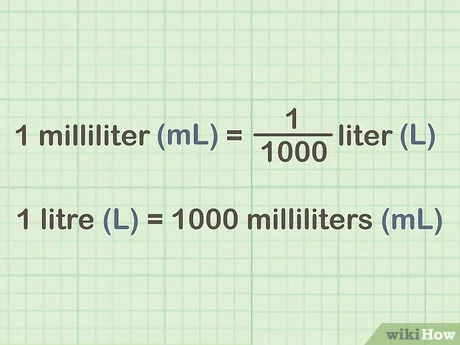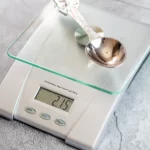How Many Milliliters in a Liter?
Understanding the relationship between milliliters (mL) and liters (L) is essential in various contexts, from cooking and baking to scientific measurements. Whether you’re following a recipe that calls for a specific volume or need to convert between units for a laboratory experiment, knowing the conversion between these two units can help ensure accurate and consistent measurements.
Defining Milliliters and Liters
Milliliters and liters are both units of volume within the International System of Units (SI). The key differences between them are:Milliliters (mL)
- A milliliter is a unit of volume equal to one-thousandth of a liter (1 mL = 0.001 L).
- Milliliters are commonly used to measure smaller volumes, such as in recipes or for medical dosages.
Liters (L)
- A liter is a unit of volume equal to one cubic decimeter (1 L = 1 dm³).
- Liters are commonly used to measure larger volumes, such as the capacity of containers or the consumption of fuels.
Conversion Between Milliliters and Liters
The conversion between milliliters and liters is straightforward:
- 1 liter (L) = 1000 milliliters (mL)
- 1 milliliter (mL) = 0.001 liters (L)
To convert between the two units, you can use the following formulas:
- Milliliters to Liters: mL ÷ 1000 = L
- Liters to Milliliters: L × 1000 = mL
For example, if a recipe calls for 500 milliliters of milk, you can convert this to 0.5 liters (500 mL ÷ 1000 = 0.5 L). Conversely, if a container has a capacity of 2 liters, you can convert this to 2000 milliliters (2 L × 1000 = 2000 mL).
Practical Applications
Knowing the conversion between milliliters and liters is useful in a variety of everyday and professional situations, such as:Cooking and Baking
- Recipes often use milliliters to measure liquid ingredients, such as water, milk, or oil. Being able to convert these measurements to liters can be helpful when scaling recipes or purchasing larger quantities of ingredients.
Laboratory Measurements
- In scientific research and experiments, milliliters and liters are commonly used to measure the volume of liquids, solutions, or other substances. Accurate conversions between the units are crucial for ensuring precise measurements and consistent results.
Household and Commercial Measurements
- Many household and commercial products, such as beverages, cleaning supplies, or fuel, are often measured and sold in liters. Understanding the conversion to milliliters can be useful for smaller-scale usage or when comparing product sizes.
Medical Dosages
- In the medical field, milliliters are frequently used to measure the volume of medications, intravenous fluids, or other medical solutions. Accurate conversions between milliliters and liters are essential for ensuring proper dosing and patient safety.
By familiarizing yourself with the conversion between milliliters and liters, you can enhance your ability to work with volume measurements in a wide range of contexts, from the kitchen to the laboratory.
Defining Milliliters and Liters
Milliliters and liters are both units of volume within the International System of Units (SI). The key differences between them are:Milliliters (mL)
- A milliliter is a unit of volume equal to one-thousandth of a liter (1 mL = 0.001 L).
- Milliliters are commonly used to measure smaller volumes, such as in recipes or for medical dosages.
Liters (L)
- A liter is a unit of volume equal to one cubic decimeter (1 L = 1 dm³).
- Liters are commonly used to measure larger volumes, such as the capacity of containers or the consumption of fuels.
Conversion Between Milliliters and Liters
The conversion between milliliters and liters is straightforward:
- 1 liter (L) = 1000 milliliters (mL)
- 1 milliliter (mL) = 0.001 liters (L)
To convert between the two units, you can use the following formulas:
- Milliliters to Liters: mL ÷ 1000 = L
- Liters to Milliliters: L × 1000 = mL
For example, if a recipe calls for 500 milliliters of milk, you can convert this to 0.5 liters (500 mL ÷ 1000 = 0.5 L). Conversely, if a container has a capacity of 2 liters, you can convert this to 2000 milliliters (2 L × 1000 = 2000 mL).
Practical Applications
Knowing the conversion between milliliters and liters is useful in a variety of everyday and professional situations, such as:Cooking and Baking
- Recipes often use milliliters to measure liquid ingredients, such as water, milk, or oil. Being able to convert these measurements to liters can be helpful when scaling recipes or purchasing larger quantities of ingredients.
Laboratory Measurements
- In scientific research and experiments, milliliters and liters are commonly used to measure the volume of liquids, solutions, or other substances. Accurate conversions between the units are crucial for ensuring precise measurements and consistent results.
Household and Commercial Measurements
- Many household and commercial products, such as beverages, cleaning supplies, or fuel, are often measured and sold in liters. Understanding the conversion to milliliters can be useful for smaller-scale usage or when comparing product sizes.
Medical Dosages
- In the medical field, milliliters are frequently used to measure the volume of medications, intravenous fluids, or other medical solutions. Accurate conversions between milliliters and liters are essential for ensuring proper dosing and patient safety.
By familiarizing yourself with the conversion between milliliters and liters, you can enhance your ability to work with volume measurements in a wide range of contexts, from the kitchen to the laboratory.
FAQ
Q: How many milliliters are in a liter?1 liter (L) is equal to 1000 milliliters (mL).
Q: How do I convert milliliters to liters?To convert milliliters to liters, divide the milliliter value by 1000. For example, 500 mL = 0.5 L (500 mL ÷ 1000 = 0.5 L).
Q: How do I convert liters to milliliters?To convert liters to milliliters, multiply the liter value by 1000. For example, 0.75 L = 750 mL (0.75 L × 1000 = 750 mL).
Q: What is the difference between milliliters and liters?Milliliters (mL) and liters (L) are both units of volume in the International System of Units (SI). Milliliters are used to measure smaller volumes, while liters are used to measure larger volumes. 1 liter is equal to 1000 milliliters.
Q: How many milliliters are in 5 liters?5 liters is equal to 5000 milliliters (5 L × 1000 = 5000 mL).
Q: How many liters are in 10,000 milliliters?10,000 milliliters is equal to 10 liters (10,000 mL ÷ 1000 = 10 L).For a more detailed look at the conversion between milliliters and liters, you can refer to this Wikipedia article on the liter.


